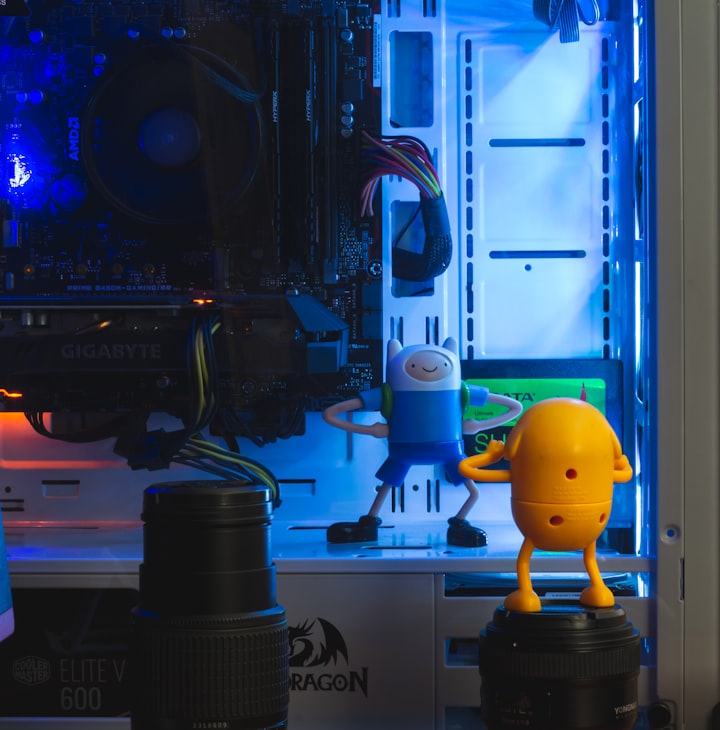Unraveling the Mystery: The Burari Deaths Case
A Chilling Tale of Mysterious Mass Suicide in Delhi

The Burari deaths case, which unfolded in 2018 in Delhi, India, sent shockwaves through the nation and captured international attention. The incident involved the mysterious deaths of 11 members of the Bhatia family, who were found hanging from an iron-mesh in their home in Burari. As investigators delved deeper into the case, various religious, psychological, and environmental aspects came to light, shedding light on potential influences that may have played a role in this tragic incident.
Religious Aspects: One of the prominent aspects that emerged in the Burari deaths case was the role of religious beliefs and practices. It was revealed that the Bhatia family followed certain unusual rituals and beliefs, with the hope of attaining good luck and prosperity. They were known to be devout followers of a local self-styled godman, who had reportedly instructed them to perform certain rituals to ward off evil spirits and bring prosperity to the family.
The family's belief in occult practices and the supernatural was evident from the handwritten notes and symbols found at the scene, which indicated their involvement in mysticism and numerology. It was reported that the family had also performed elaborate ceremonies, including the construction of a makeshift "jal samadhi" (water burial) tank in their house, as part of their religious practices.
This aspect highlights the potential influence of religious beliefs and practices on individuals' behaviors and actions. While religion can provide comfort and meaning to people, it can also be taken to extremes, leading to irrational beliefs and behaviors that may have detrimental consequences.
Psychological Aspects: The Burari deaths case also brought to the forefront the role of psychological factors in influencing human behavior. The family's actions, including the decision to end their lives in a mass suicide, raised questions about their mental state and the potential presence of underlying psychological disorders.
One possible psychological aspect that may have played a role in this case is the phenomenon of "shared psychosis" or folie à deux. It is a rare psychiatric condition in which two or more individuals share a delusional belief or symptom. In the case of the Bhatia family, it is speculated that one or more members of the family may have influenced the others to adopt their shared belief in occult practices and engage in the tragic act of mass suicide.
The family's willingness to comply with the instructions of the godman and their engagement in bizarre rituals, as well as the absence of any signs of struggle at the scene, raise questions about their cognitive and emotional state. It is possible that they may have been suffering from a shared delusion, where their distorted beliefs and perceptions influenced their actions.
Additionally, the family's social dynamics and family structure may have also played a role in the psychological aspects of the case. The Bhatia family lived in a joint family system, where multiple generations lived together in the same household. The dynamics of living in close quarters with multiple family members could have contributed to the development of a shared psychosis or influenced the family's decision-making process.
Environmental Aspects: The environmental aspects surrounding the Burari deaths case cannot be overlooked. The family's living environment, including their home and neighborhood, may have played a role in shaping their beliefs and behaviors.
The Bhatia family lived in a densely populated urban area in Burari, which was known for its congested living conditions and lack of open spaces. The fast-paced city life, with its pressures and stressors, could have impacted the family's mental well-being and contributed to their vulnerability to extreme beliefs or behavior.
Furthermore, the influence of the godman or other external individuals who were part of the family's social circle cannot be ignored. It is possible that the family's susceptibility to external influences The environmental aspects surrounding the Burari deaths case cannot be overlooked. The family's living environment, including their home and neighborhood, may have played a role in shaping their beliefs and behaviors.
The Bhatia family lived in a densely populated urban area in Burari, which was known for its congested living conditions and lack of open spaces. The fast-paced city life, with its pressures and stressors, could have impacted the family's mental well-being and contributed to their vulnerability to extreme beliefs or behavior.
Furthermore, the influence of the godman or other external individuals who were part of the family's social circle cannot be ignored. It is possible that the family's susceptibility to external influences, including the instructions of the self-styled godman, could have been heightened due to their living environment and social circumstances.
Another environmental aspect that came to light was the financial and economic stress faced by the family. It was reported that the Bhatia family was struggling with financial difficulties and had accumulated debts. The pressure to improve their financial situation and overcome their hardships may have driven them to engage in the rituals and practices suggested by the godman, in the hope of finding a solution to their problems. This financial stress could have contributed to their vulnerability and desperation, leading them to adopt extreme measures.
In addition, the sensationalism and sensational coverage of occult practices and supernatural beliefs by the media and society at large may have influenced the family's behavior. The sensationalization of such practices can fuel curiosity and fascination, and in some cases, individuals may succumb to societal pressures or seek attention by engaging in similar behaviors.
In conclusion, the Burari deaths case was a complex and tragic event that involved various religious, psychological, and environmental aspects. The family's beliefs in occult practices, their potential shared psychosis, financial stress, living environment, and societal influences may have played a role in shaping their actions. It is crucial to understand the multi-dimensional nature of such incidents and avoid simplistic explanations or sensationalization. Mental health awareness, critical thinking, and addressing societal pressures are important in preventing similar occurrences in the future. It is a reminder of the need for a holistic approach that takes into consideration various factors when trying to understand and prevent such incidents from occurring in the future.
As a society, we need to be aware of the potential impact of religious beliefs, psychological factors, and environmental influences on individuals' behaviors and actions. It is crucial to promote mental health awareness, encourage critical thinking, and create a supportive environment where individuals can seek help without fear of judgment. In addition, media and society should be mindful of how they portray sensational and occult practices, avoiding sensationalism and promoting responsible reporting.
Ultimately, understanding the Burari deaths case from different perspectives is a complex task that requires further investigation, research, and thoughtful analysis. It is a stark reminder of the importance of addressing mental health issues, promoting critical thinking, and creating a supportive environment to prevent similar incidents in the future.
About the Creator
Shams Ul Qammar
I'm a psyche student who loves raising awareness about mental health. Together we can delve into the world of mental health issues. My responses will be based on my studies. Let's embark on this journey of exploration together!






Comments
There are no comments for this story
Be the first to respond and start the conversation.